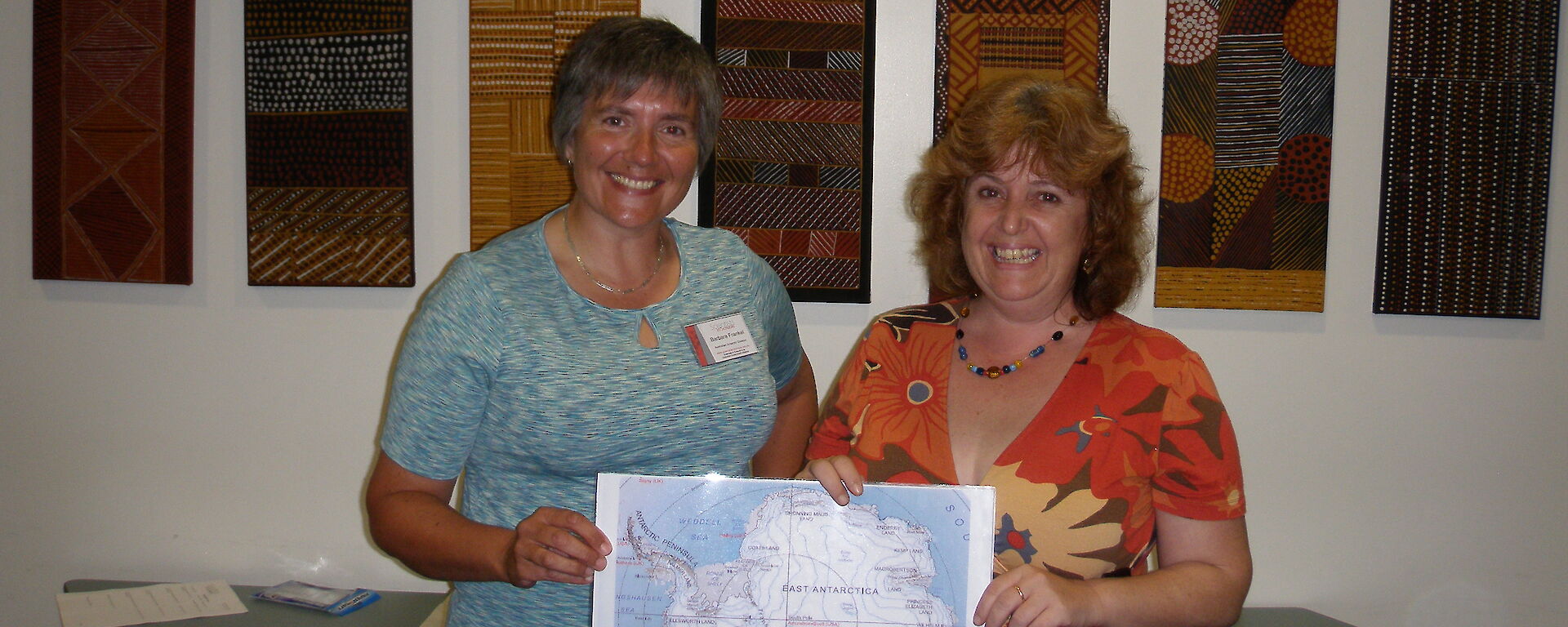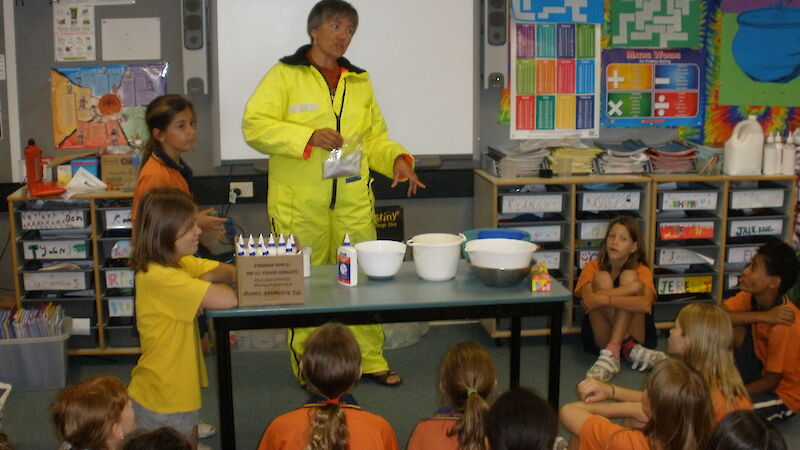I have a passion for sharing my Antarctic experiences with those who do not have ready access to such exciting and significant activities, so I decided to visit my partner school for a few days, and to call in to several schools along the way, in Alice Springs and Katherine. My offers were readily accepted, so I gave a presentation to each one, tailoring it to the audience; from indigenous primary school children through to senior high school and School of the Air.
At my partner school – Girraween Primary School on the eastern outskirts of Darwin – teachers Kay Chaffey and Robyn Tidswell combined their Year 5/6 classes for my visit. So I was interacting with more than 40 students who were incredibly eager to listen to me and absorb my tales of what it’s like to work in Antarctica. Prior to my visit they studied a unit on Antarctica and had each selected a topic to research and present on the classroom wall. It was wonderful to see a whole wall covered in their art work and projects as I walked into their classroom. This meant that they already had significant knowledge of the scientific concepts I was talking to them about and I could tell how much they enjoyed the fact that I was embellishing an area familiar to them, and making it real for them.
I had already learned from previous school visits and from open day activities in my work place that hands-on activities, preferably involving cold weather clothing, is a must – even if the outdoor temperature is over 30 degrees! As predicted, this worked a treat, with everyone vying to try on a fluorescent freezer suit, rather glary striped thermal underwear, snow goggles, hat and gloves.
Another more tactile experience involved ‘glacier goo’. I decided to introduce my students to the concept of ice sheet dynamics by taking an exercise from the Centre for Remote Sensing of Ice Sheets website. We made wonderful oozing ‘ice’ from PVA glue and borax. Not only did the children adore making something themselves in small groups, but they got to play with this goo, dolloping it on a map of Antarctica, watching it ooze beautifully, and measuring its flow rate.
I had three 3-hour sessions with this large number of students and was totally exhausted and exhilarated from the experience. I was surprised by their undivided attention; however, I think this was partly the expertise of the teachers who kept things moving along at a good pace, and changed tack when necessary to keep them all motivated.
These partnerships are a win-win situation and an incredibly positive exercise in which to be involved. I feel I’ve contributed to helping young children not to be scared of science at the same time as helping them and their community understand what Australia is doing in Antarctica and how important it is.



